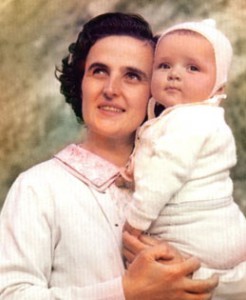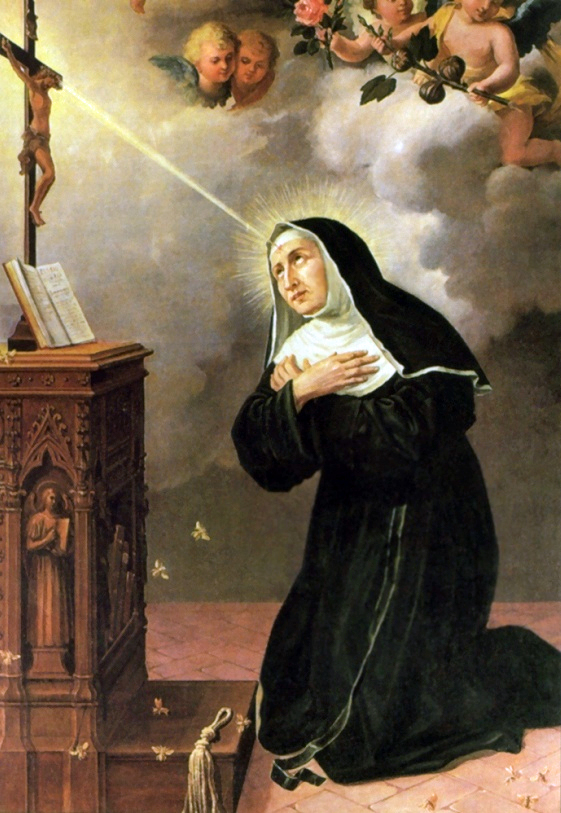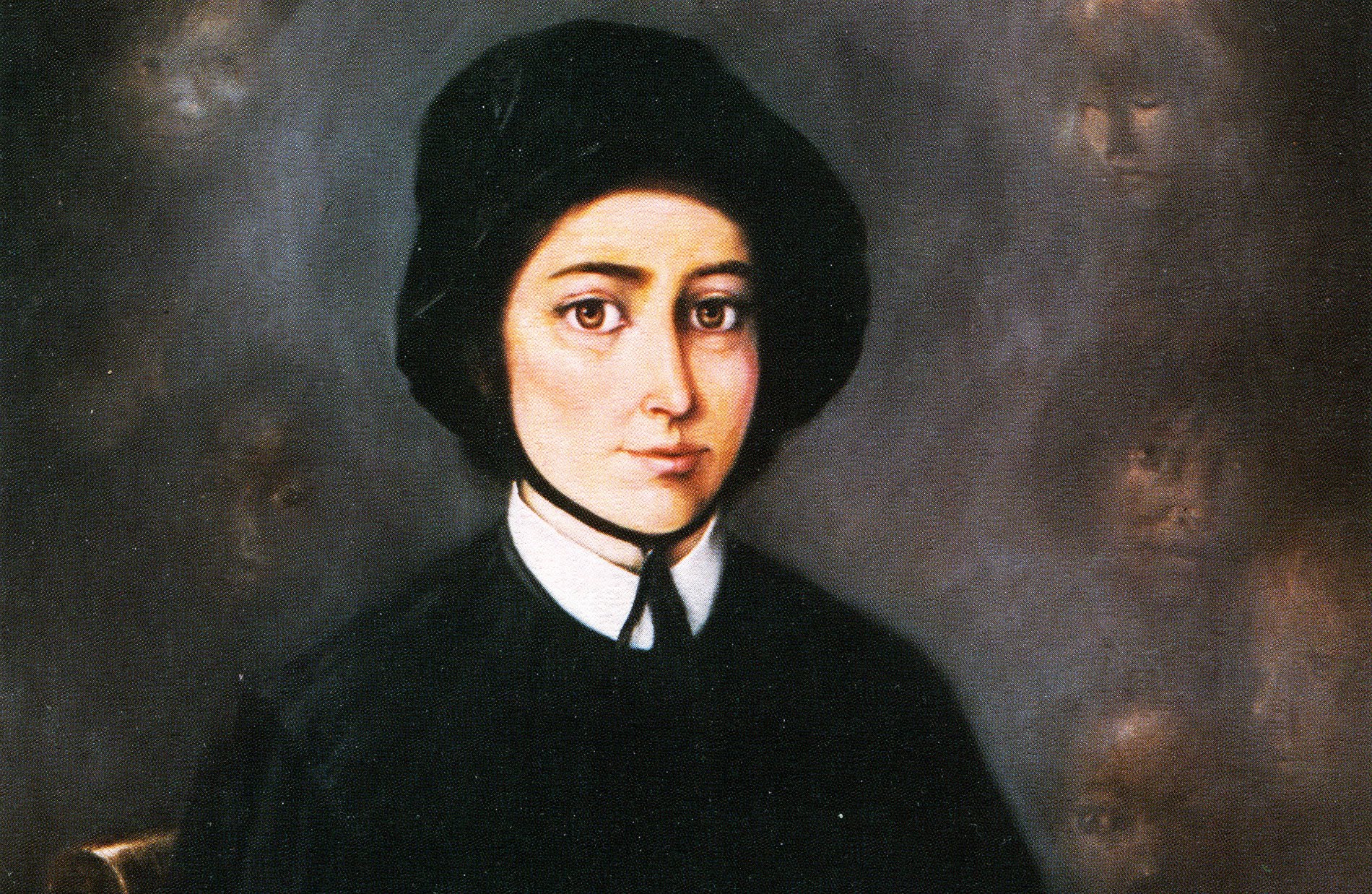We all benefit from the examples of others who show us how to do certain tasks or carry out certain roles, and this also applies to marriage. It is important for couples to have good role models to help them learn to love and grow strong, Christ-centered marriages. Here we highlight saints from the Church’s rich tradition that married couples can learn from and turn to in prayer. You can read more about praying with and to the saints in Joined by Grace: A Catholic Prayer Book for Engaged and Newly Married Couples (Ave Maria Press, April 2017).
Chapter 1: Welcoming and Accepting: The Grace and Call of Baptism
Mary and Joseph
When we look at sacred scripture and the Tradition of the Church we find many examples of individuals and couples who have imitated divine love. First and foremost among these are Mary, the mother of Jesus, and Joseph, her husband. Mary and Joseph were a couple who accepted a significant role in God’s love story. Mary accepted the news that she was to be the mother of the Son of God with profound humility and trust, and Joseph welcomed Mary and her unborn child into his life. Theirs is an example of generous acceptance of God’s will. You can read the accounts of their story in Luke 1:26-38 and Matthew 1:18-35.

Chapter 2: Being Fully Present: The Grace of Confirmation
We all benefit from the example of others. In our Catholic tradition we can look to the saints as role models. Who are the saints? Catholics profess that all those who believe in Jesus Christ belong to the communion of saints. In this family of faith there are those who are alive today, as well as those who have died in the faith and are yet awaiting perfect union with God as well as those who are already with God in the perfection of heaven. Among the last group are people who have been recognized by the Church for their exemplary life, whom have been canonized and name “Saint.” The process of declaring someone a saint involves four major steps, the third of which is called steps “beatification.” When a person is beatified he or she is know as “Blessed.”

Blessed Luigi and Blessed Maria Quattrocchi
St. John Paul II beatified Luigi and Maria Quattrocchi on October 21, 2001. They lived in Rome during the difficult years of World War II. Luigi was a lawyer and Maria a professor. They lived the Gospel message in their roles as husband and wife, as parents and as professionals. They “lived an ordinary life in an extraordinary way,” John Paul II said on the day of their beatification.
Luigi and Maria assisted refugees and those dislocated by the war, participated in the local Catholic community and helped out with education courses and marriage preparation. They raised four children and created a home where the gift of faith could grow.
In 1952 Maria wrote in her book, Radiography of a Marriage:
“Since the birth of our first son, we began dedicating ourselves to the children … We both felt the tremendous responsibility in front of God, who had entrusted the children to our care and in front of our country that expected loving citizens … But one thing is certain; … we both desired what was best for them … even if it required personal sacrifices.”
Luigi and Maria were beatified for their dedication to God, to each other, to their children, and to their community. In their commitment they modeled to us how we can find holiness of marriage by being present and attentive to each other, to our children and to the needs of our community.
Chapter 3: Giving Oneself Completely: The Grace of the Eucharist
Christ’s love is utterly self-giving. St. Gianna Molla is the example of a professional young mother who surrendered her life for the sake of her child.
St. Gianna Molla
Gianna was a loving wife, a mother, and a physician. She married Pietro Molla in September 1955. She welcomed marriage as a vocation from God and worked to create a Christian home for her family. She and Pietro had three children and she skillfully balanced the demands of being a mother, a wife and a doctor. Gianna became pregnant again in 1961. Early in the pregnancy a tumor was discovered in her uterus, which threatened the life of her child. She told the doctor, “If you must decide between me and the child, do not hesitate: choose the child.” Choosing the route of treatment least dangerous to her unborn child, Gianna underwent surgery to remove the tumor a few days before the child was due. The operation was successful and the baby survived, but Gianna developed complications and died a few days after her daughter’s birth. She was thirty-nine years old. St. John Paul II canonized her on May 16, 2004.
St. Gianna gave her life to save the life of her child. Throughout her life she gave herself completely to her family, to her community, and to God.

Chapter 4: Forgiving: The Grace of Reconciliation
All marriages go through difficult times, and patience, persistence and prayer can help couples to survive the marital storms.

St. Rita of Cascia
Rita, an only child, was born to a pious Italian family in 1381. At a young age she wanted to enter the convent, but her parents insisted that she marry. Her parents arranged her marriage to a nobleman named Paolo Mancini. He was rich but had a violent temper and had many enemies. The couple had two sons, and for many years Rita endured his physical abuse, insults, and infidelities.
During those difficult years Rita persisted in prayer and was able to convince Paolo to withdraw from a long simmering family feud. Finally recognizing how much pain he had caused Rita, Paolo begged her forgiveness, which she gave. Unfortunately, soon after Paolo was betrayed by his allies and was murdered.
Rita forgave her husband’s murderers at his funeral, but her sons were convinced by Paolo’s brother Bernardo to avenge their father’s death. Legend tells us that Rita prayed for God to take her sons rather than allow them to fall into mortal sin. Her two sons died of an illness that swept through the village a year later.
Now alone, Rita wanted to enter a convent, but was turned away because the nuns were concerned about remaining ties to her husband’s warring family. Rita was able to approach the families and publicly resolve the feud and at the age of thirty-six she entered the convent. There she remained in a life of prayer and penance until her death in 1457.
St. Rita was canonized in 1900 and her feast day is celebrated on May 22. In many countries St. Rita is the patron saint of abused wives and grieving mothers.
Chapter 5: Healing: The Grace of the Anointing of the Sick
Serious illness can bring tremendous stress to a married couple as can so many other life struggles such as job loss, death of a loved one, financial difficulties, and quarrels with friends, neighbors, or coworkers. The Sacrament of the Anointing of the Sick teaches us how to comfort one another and to help each other heal. We all know people who are really good at comforting and standing firm with others who are in distress. Look for these gifts when you find yourself or your spouse in distress.
Sts. Louis and Zélie Martin
Louis and Zélie Martin were canonized together on October 18, 2015. They were married in 1858, and determined early on that their marriage would be dedicated to following God’s will. They were blessed with the birth of nine children, four of whom died at an early age. The Martins were devoted parents who passed their faith to their children.
In 1877 Zélie died of breast cancer and Louis was left to raise five daughters, the youngest of whom was Thérèse, four-and-a-half years old. Luis carried on the education of his daughters, teaching them submission to the will of God. Louis died in 1894 after suffering cerebral arteriosclerosis. Thérèse wrote about her parents, “God gave me a father and a mother who were more worthy of heaven than of earth.” All five daughters entered the convent, and the youngest became known as the Little Flower, St. Thérèse of Lisieux. Her remarkable parents are for all of us beautiful models of patient endurance, steadfast faith, and constant love through very difficult ailments and painful deaths.

Chapter 6: Serving: The Grace of Marriage and of Holy Orders
Christ calls each of us to serve the Father by caring for one another, the communities in which we live. Always we are called to bend the knee to whomever around us needs what we might have to give. Always we are called to be Christ’s presence in the world.

St. Elizabeth Ann Seton
Elizabeth was born in 1774 in New York City. She was the second child to a socially prominent couple. Her mother died when she was only three, and her father remarried. The family grew to five children but Elizabeth’s father and stepmother separated, and Elizabeth and her older sister were rejected by their stepmother.
At age nineteen, Elizabeth married William Seton, a wealthy businessman. They belonged to Trinity Episcopal Church in New York City, and Elizabeth became very active in the church. In 1802 William’s business went into bankruptcy, and soon after he died of tuberculosis. At age thirty Elizabeth was widowed, penniless, and had five small children to support.
In 1805, Elizabeth converted to Catholicism and, to support herself and her children, started a school for young ladies of prominent families. But when the parents of her students learned about her conversion they pulled their daughters from the school. In 1809, with the support of the Sulpician Fathers, she established a school for Catholic girls and later a religious community dedicated to the care of the children of the poor.
Elizabeth Ann Seton died in Emmitsburg, Maryland on January 4, 1821 at the age of 46. She was the first native-born American to be canonized a saint which Pope Paul VI did on September 14, 1975.
